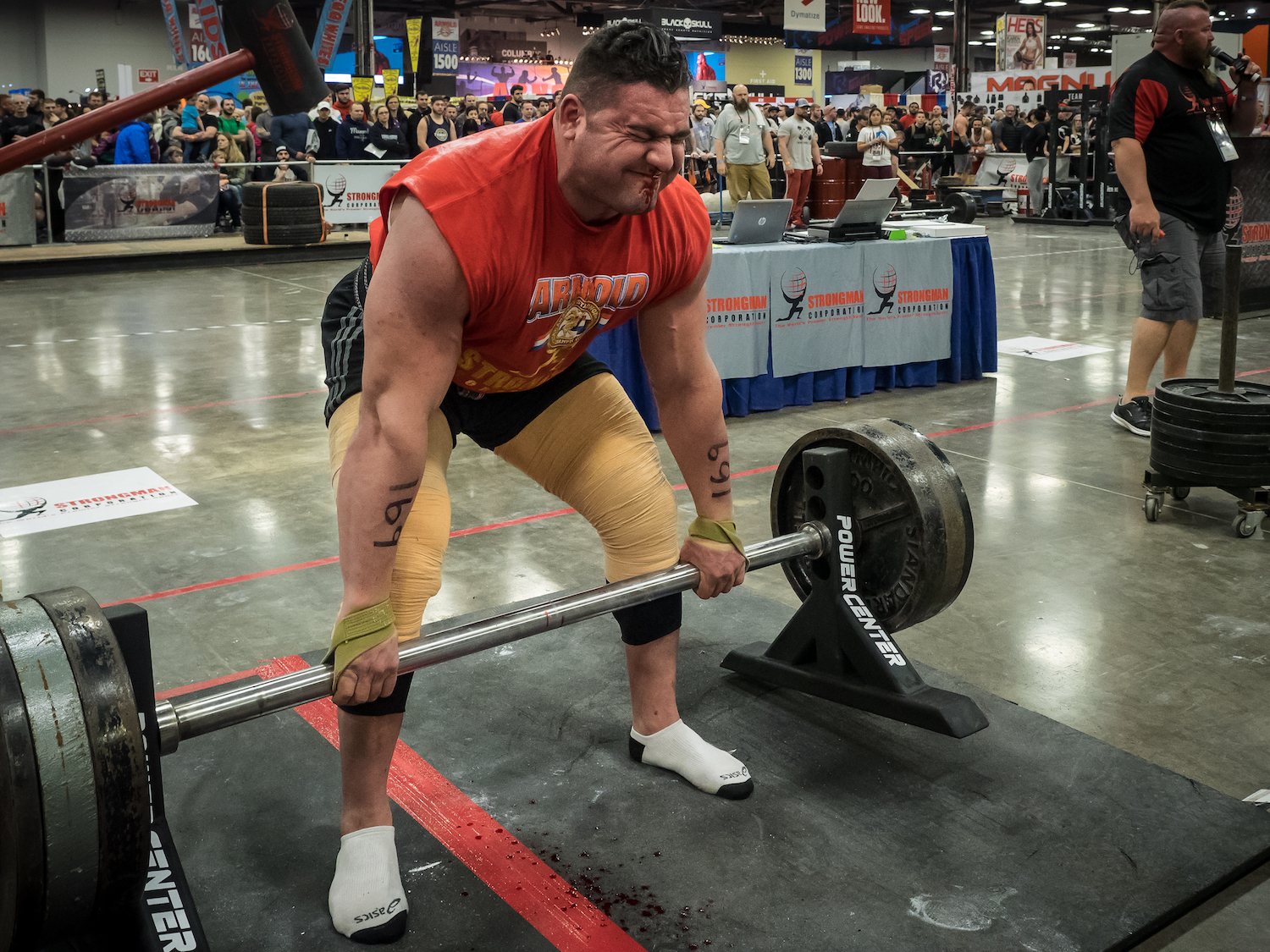Let me start out by declaring that I propose a question that has no universal answer: Which type of strongman training is right for you?
Every human is unique, but while similarities exist, schedules, recovery abilities, mental stress and many other factors will determine what is ideal for each athlete. By better understanding the demands of a particular type of program and your personal circumstances, better choices should become apparent and experiments can be performed to tailor them to your needs.
The Basic Types of Strongman Programs
In my eyes there are only two kinds of programs: periodized and free form (also known as instinctive). A periodized training program is simply a plan that you follow for a certain length of time, also referred to as the Macrocycle. Inside that Macrocycle you will find the Mesocycle, or short term training block. It will be the protocol you would follow for a certain series of weeks designed to have a goal (increase strength, power, or recovery). The Microcycle is one week of the actual plan that is designed to work within the macrocycle.
A Periodized plan will follow one or a combination of the following protocols. You can think of them as theories of how to best reach your goal.
- Linear: This theory is one of the oldest in training. Simply add more weight or increase the reps every week. This works well for beginner to intermediate athletes. It is simple and is a great way to build a base and become better at the basic exercises.
- Undulating: In this training you will increase sets, reps, and weights (volume and intensity). These factors will ebb and flow to change stress on the body. Often this style is used to peak an athlete by gradually increasing in volume to push the athlete’s abilities, and then sharp decreases in an effort to have the body compensate by recovering better.
- Conjugate: This method also proposes to make changes in the program, but does so in the exercise selection to change the stress on the athlete. Its goal is the same as the others: to make a more productive athlete.
These methods of programming within periodization are not mutually exclusive either. You can set up a program with cycles of all three methods separately, run an undulating conjugate program, or really whatever your coach and you dream up.
Can You Go At It Without One?
A free form program is just that: The athlete and the coach train instinctively. There is little to no plan for the month or day until the gym time happens. Then the question “What do you feel like working on?” is proposed. The athlete then decides what they need to work on and attack it from there. More often than not this style is often seen by rookie athletes and surprisingly, to some, the very elite. ‘Why is that?’ you may ask. Well the answer depends on the athlete.
A new athlete has so much to learn when starting the sport of strongman. There are three different objects to press that are common (axle, log, and circus dumbbell) and numerous odd overheads to learn (block press, viking press, even standard bar). They have to squat, deadlift (from different heights), flip tires, load stones… the list is seemingly endless. Often it may be best for them to have a break in period that is based on just getting comfortable with that style of movement and to help gauge what type of recovery is necessary. Some athletes will progress quickly while others may take months to get into a rhythm where they could start a more organized program.
The Best Athletes Often Step Outside the Conventional
Elite athletes, on the other hand, may have trained an organized style for a long period of time and feel that they can better adjust volumes and exercises on the fly during training. The may have a concept of what they want to achieve that day but change and flow with the feedback they receive from their training. After doing periodized training for nearly 20 years, I finished the last two years of my career with this style and hit most of my lifetime PRs. For it to be truly effective the athlete must understand their body completely and fight urges to go easier when you know you should be going harder and vice versa.
So where to start? If you are past the learning stage it would be wise to start simply and pursue a linear periodization program that works well with your time commitments. If this program works for you (and it should) you should keep running it until progress slows to a halt. At that point in time you may want to consider adding in undulating and/or conjugate methods. A linear program works well for many people for years, and I find it is best to keep it simple for most people until their progress becomes frustrating.
After training for a long period of time it may be exciting to think that you can switch to the more instinctive style of training. Just don’t think that it is going to be more fun or easier. My experience taught me since there were no preset expectations on the day, I was free to explore my own depths of self limits, often leading to training sessions that became self torture. These would then be tempered with days or weeks of active recovery sessions that most likely hindered some progress. Learning your limits is key to success here.
Program selection is often key to long term success. You will be amazed by your progress when simply sticking to one for the long term. Far too many athletes program hop or change the day’s plan to suit their needs. Whatever you do, make a decision and stick to it for your best long term gains.
Images: Michele Wozniak


